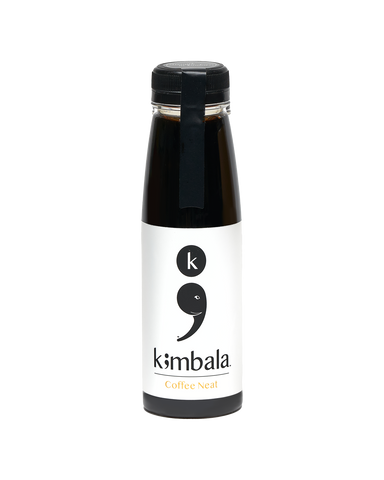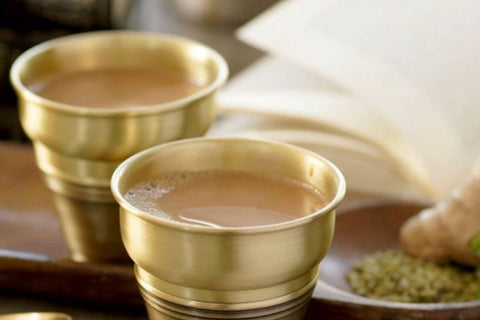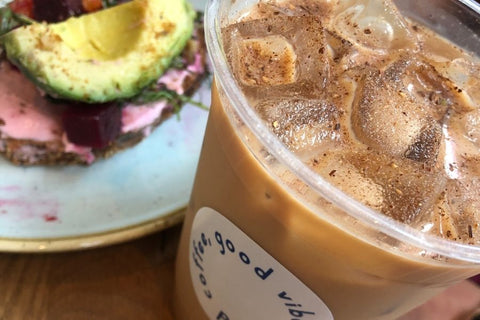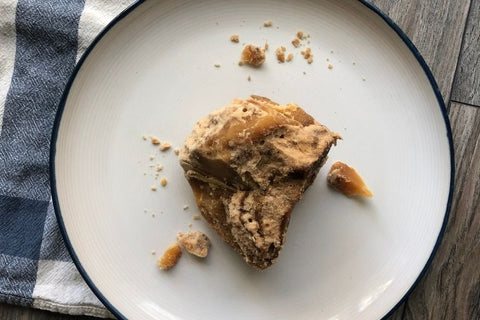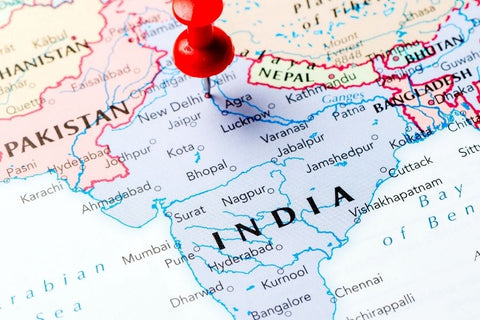Tags:
Jaggery
Jaggery benefits
Jaggery sugar
In a few of Kimbala’s products, there is an uncommonly common ingredient you must get to know. Keeping true to our commitment of sourcing products from India whenever possible, jaggery was a natural selection. This unrefined sugar is the perfect addition not only to our Kimbala products but is also something that should have high consideration for addition to your daily routine.
What is jaggery & how is jaggery made?
Very simply put, jaggery is sugar cane juice, solidified. Sugar cane stalks are crushed to extract their juices, and the juices are placed into large open pans, heated, mixed, and evaporated. The result is a highly viscous liquid - essentially a sugar cane syrup. After the sugar cane syrup comes to life, it is poured into bucket shaped molds and cooled to create the characteristic solid block shape. This shape makes it simpler to handle, store and stack.

Jaggery mold, a typical bucket shape
A granulated version of jaggery, often referred to as jaggery powder, can also be produced by vigorously whipping the syrup in a stainless steel bowl.
Jaggery is also known as unrefined non-centrifugal sugar (UNCS) because it is not centrifuged to remove its molasses - a process that does take place with white sugar. More to come on why that is beneficial. You may notice the granulated jaggery looks similar to a typical brown sugar - jaggery is a less processed version of a brown sugar or demerara sugar.
Jaggery production & common names worldwide
According to Apeda Agra Exchange of India, India produced 30 million metric tons of jaggery in 2019/2020, a tie with Brazil for the top production in the world. Jaggery is more commonly known as ‘gur’ in India, and many other countries in Asia and Latin America also use and love this UNCS. It can be found by different names in many countries:
- Rapadura (Brazil)
- Kokuto (Japan)
- Panela (Colombia)
- Piloncillo (Mexico)
- Chancaca (Honduras)
- Tapa de dulce (Costa Rica)
- Jaggery (Philippines)
- Gur or jaggery (India)
Since jaggery is not a processed sugar, color, texture and flavor may vary from batch to batch depending on the weather during which the sugar cane grew, the quality of the sugar cane from any given field and slight variations in technique of production.
You may see some jaggery a lighter, more golden color and others a darker, more brown/amber color. In India specifically, we have come across jaggery that is nearly black in color because it is so rich with molasses. The unique differences in color and yield of the sugar cane from year to year is telling of the true unrefined, unprocessed nature of jaggery. This is one of the many unique characteristics of jaggery that is loved so much.
Jaggery vs. Sugar: Is jaggery the same as cane sugar or raw cane sugar?
Using the term “cane sugar” does refer to any sugar derived from sugarcane, directly, or indirectly. However, there are different types of facilities the sugarcane may go to and different ways to process the sugarcane that determines whether the sugar is unrefined, raw or refined.
- Unrefined cane sugars → are not centrifuged to separate sugar crystals → retain original cane molasses → retain the vitamins, minerals and antioxidants
- Raw cane sugars → are centrifuged/ put through a single crystallization process → majority of molasses is removed → no retention of vitamins, minerals, antioxidants
- Refined cane sugars → are centrifuged/put through multiple crystallization processes → all molasses is removed → synthetic chemicals may be used to remove impurities → absolutely no retention of vitamins, mineral, antioxidants
According to Medical News Today, jaggery is easier on the body and metabolism since it takes longer to digest, thus releasing energy slowly. In comparison, refined sugar will release energy very quickly, giving what is commonly known as a ‘sugar high’, and is also harsh on the body and metabolism.
At the end of the day, jaggery is a sweetener and it should not be added in excess to foods as a way to obtain additional vitamins and minerals. However, when making the decision of which sugar to consume, jaggery is a better option to select over other raw sugars or refined sugars.

Where can I buy jaggery?
The easiest way to locate where to jaggery is to do a quick search online for your nearest Indian grocery store. It may also be available at miscellaneous ethnic groceries; however, it is recommended you call ahead to check.
Select Walmart stores as well as major grocery chains in your area may carry jaggery without your having noticed. It may be located in the baking goods aisle or may also be located in an ‘international goods’ aisle of the store.
Amazon is another great way to search for jaggery and have it delivered to your home. While we recommend finding a whole solid jaggery from a local Indian grocery store to ensure pure jaggery is being purchased, jaggery powder is an easy and convenient option if you don't have access to an Indian grocer locally.
There are many great potential health benefits to using jaggery, which we will be detailing in an upcoming post. In the meantime, give jaggery a try with Kimbala Coffee a la Jaggery and be sure let us know what you think.

